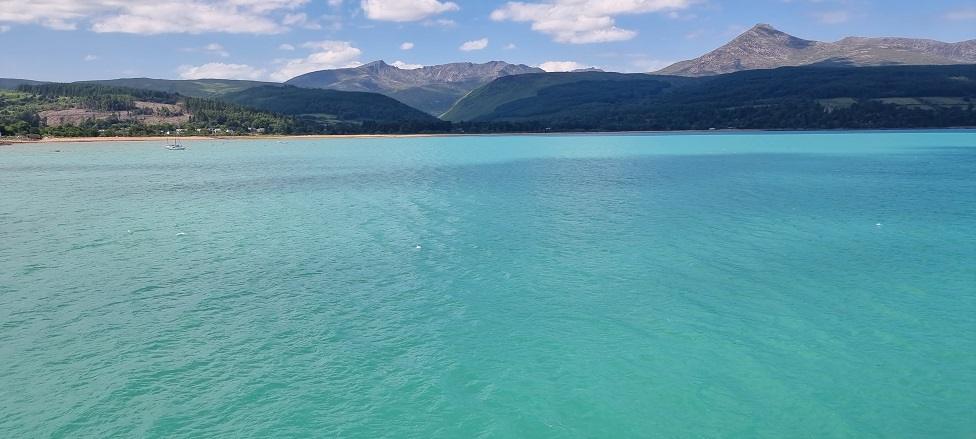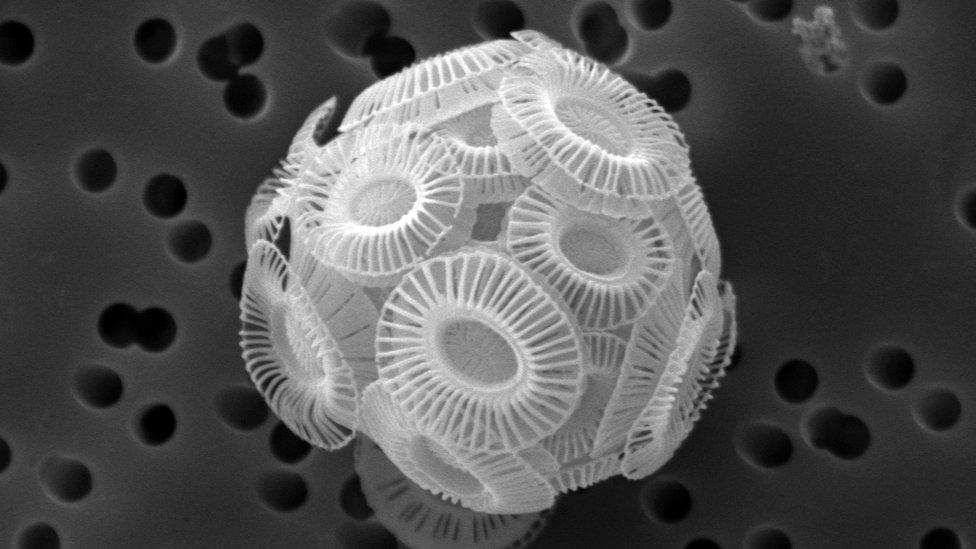Marine algae turned Scotland's water bright blue
- Published

Turquoise waters photographed from the ferry crossing from Ardrossan to Arran on 21 June
Microscopic sea algae are behind a phenomenon that turned Scotland's water a beautiful Mediterranean blue, scientists have confirmed.
The tiny coccolithophore were photographed by Marine Scotland researchers at Aberdeen University.
The spherical cells are covered in chalk plates that reflect the sunlight just below the surface of the water.
A series of photographs were taken by visitors of turquoise waters on Scotland's west coast last month.
A water sample was then examined by a Field Studies Council centre at Millport on the Isle of Cumbrae on 24 June.

Dr Eileen Bresnan identified the coccolithophore under an electron microscope
It was sent to the University of Aberdeen, where Dr Eileen Bresnan identified the coccolithophore using an electron microscope.
The tiny cell is just five micrometres in diameter. A human hair is about 80 to 100 micrometres
The algae have been living in large numbers in the upper layer of the sea around Ayrshire.
Dr Paul Tett, from the Scottish Association for Marine Science (SAMS), said the phenomenon had not been seen in Scotland since the 1980s.

The NEODAAS earth observatory produced this spectacular satellite image on 21 June
He told BBC Radio Scotland's Out of Doors: "The organisms are unusual in west of Scotland waters. We get this wonderful Mediterranean colour of the sea.
"The normal colour is greeny brown, the kind of plankton normally in the Clyde are very different.
"The bloom of coccolithophore is pretty unusual on the west coast, probably the result of water coming from the North Atlantic."
Dr Tett said the algae was not harmful to other marine life, and was beneficial in the battle against climate change.
He added: "They are an example of something that does quite a lot of good in the world.
"The limestone plates absorb carbon dioxide from sea water. They are, in their own way, helping to reduce the build up of greenhouse gases."